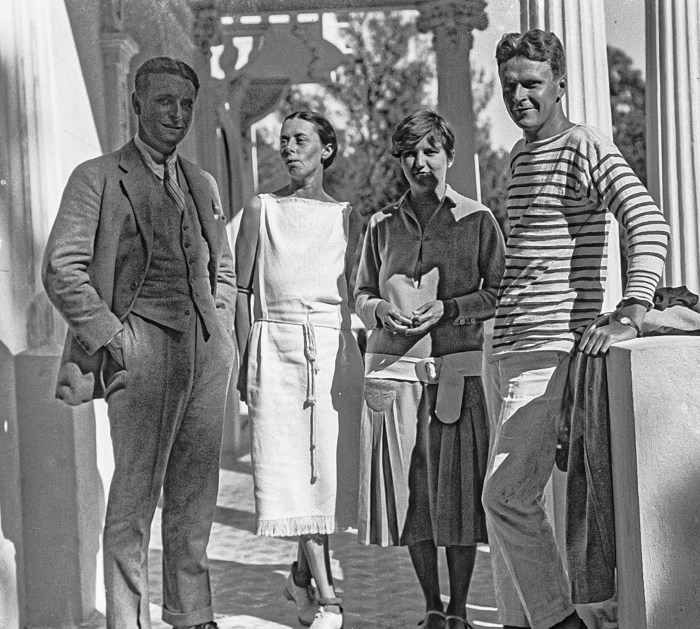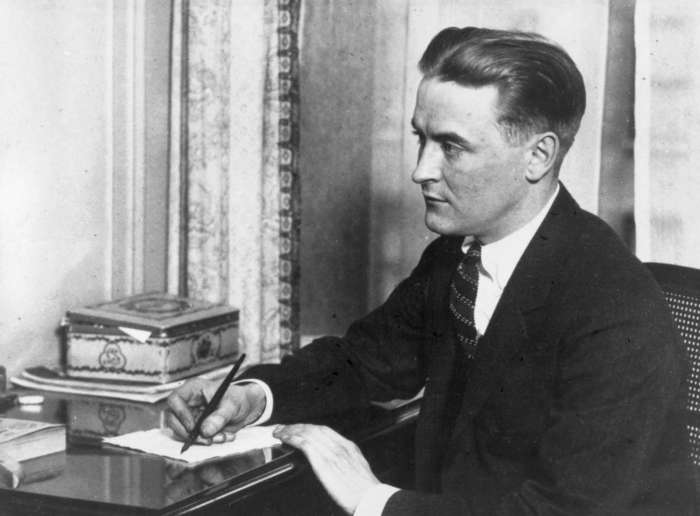Great Gatsby 1920s Wedding Dresses
The Flapper Influence on Great Gatsby Wedding Dresses

Source: redd.it
Great gatsby 1920s wedding dress – The roaring twenties, immortalized in F. Scott Fitzgerald’s “The Great Gatsby,” witnessed a dramatic shift in women’s fashion, profoundly impacting wedding attire. The flapper aesthetic, with its rebellious spirit and liberated silhouette, redefined bridal style, moving away from the restrictive Victorian era gowns.
Flapper Dress Characteristics and Their Influence on Wedding Attire
Flapper dresses were characterized by their loose, dropped waistlines, shorter hemlines (often reaching the knee or even higher), and emphasis on a boyish, streamlined silhouette. These features, previously unheard of in bridal wear, revolutionized wedding dress design. The restrictive corseted gowns of the Victorian era gave way to more comfortable and movement-friendly styles, reflecting the changing social attitudes of the time.
Evolution of Wedding Dress Styles: Victorian Era to the 1920s
The transition from Victorian-era wedding dresses to those of the 1920s represents a significant stylistic departure. Victorian gowns were characterized by full, voluminous skirts, long trains, high necklines, and intricate detailing. Fabrics like heavy brocades, silks, and laces were prevalent. The 1920s saw a move towards simpler, more streamlined designs, utilizing lighter fabrics and emphasizing a sleek, modern aesthetic.
Comparison of 1920s and Contemporary Wedding Gowns
The following table highlights the key differences between typical 1920s wedding dresses and contemporary designs:
| Aspect | 1920s Wedding Dress | Contemporary Wedding Dress | Comparison |
|---|---|---|---|
| Silhouette | Dropped waist, straight, A-line, or loose-fitting | A-line, mermaid, ballgown, sheath | 1920s styles are generally simpler and less structured than modern options. |
| Neckline | V-neck, square neck, halter neck, bateau | Sweetheart, strapless, off-the-shoulder, high neck | A wider variety of necklines are seen in contemporary designs. |
| Fabric | Silk, satin, lace, chiffon | Lace, tulle, silk, satin, crepe | While similar fabrics are used, modern dresses may incorporate more varied textures and blends. |
| Embellishments | Beading, embroidery, fringe, sequins | Lace appliqués, beading, embroidery, crystals, 3D floral details | Embellishments remain a key feature, though modern designs often showcase more elaborate details. |
Fabric and Embellishments in Great Gatsby Wedding Dresses: Great Gatsby 1920s Wedding Dress
The choice of fabrics and embellishments played a crucial role in defining the elegance and sophistication of 1920s wedding dresses. The era’s luxurious materials and intricate detailing reflected the opulent lifestyle of the wealthy elite.
Common Fabrics and Their Aesthetic Qualities, Great gatsby 1920s wedding dress
Silk, satin, and lace were the most popular fabrics. Silk offered a luxurious sheen and smooth drape, while satin provided a glossy, reflective surface. Lace, often delicate and intricate, added a touch of romance and elegance. Chiffon, a lighter and more flowing fabric, was also used, especially for less formal occasions.
Popular Embellishments of the Era
Beading, embroidery, and fringe were common embellishments. Beading added sparkle and texture, while embroidery provided intricate patterns and designs. Fringe, often made of beads or sequins, added a playful and dynamic element. These embellishments were often concentrated at the neckline, waistline, or hemline, drawing attention to the dress’s key features.
Hypothetical Wedding Dress Design
Imagine a wedding dress crafted from ivory silk charmeuse, its flowing silhouette enhanced by delicate beading along the dropped waistline. Intricate floral embroidery adorns the bodice, cascading down into a subtle fringe along the hem. The overall effect is one of understated elegance, reflecting the refined taste of the era.
The Role of Color in 1920s Wedding Attire
While white remained the most popular color, ivory, cream, and blush shades were also common, particularly among those with more casual tastes. Color choices, while often subtle, could reflect personal preference or social status, with richer fabrics and more elaborate embellishments suggesting higher social standing.
Silhouette and Style Variations in 1920s Wedding Dresses
The 1920s saw a variety of silhouettes and styles in wedding dresses, reflecting the era’s embrace of both modernity and femininity. The dresses were far from uniform, with several key characteristics setting them apart.
Prevalent Silhouettes
The dropped waistline was a defining feature, creating a long, lean silhouette. Straight lines and A-line styles were also popular, emphasizing the simplicity and modernity of the era. These silhouettes offered a stark contrast to the full, voluminous skirts of previous decades.
Common Neckline Styles
- V-neck: A classic neckline that added a touch of sophistication and elegance.
- Square neck: Offered a more modern and geometric feel, complementing the era’s Art Deco influence.
- Halter neck: A daring and stylish choice, showcasing the shoulders and neck.
- Bateau neck: A high, boat-shaped neckline that provided a more modest yet elegant look.
Dress Lengths and Social Implications
Dress lengths ranged from ankle-length to tea-length (mid-calf). Ankle-length gowns were generally considered more formal and appropriate for grander weddings, while tea-length dresses were suitable for less formal or daytime celebrations. The choice of length reflected both personal preference and the formality of the event.
Illustrative Descriptions of Great Gatsby Wedding Dresses
The following sections provide detailed descriptions of hypothetical wedding dresses, capturing the essence of 1920s bridal style.
Daisy Buchanan’s Wedding Dress
Daisy Buchanan’s dress would likely be a masterpiece of understated elegance. Imagine a gown of ivory silk crepe, its simple, A-line silhouette subtly emphasizing her slender figure. Delicate beading accents the dropped waistline, and a delicate lace trim adorns the neckline, hinting at a hint of old-world charm beneath her modern sophistication. The overall effect is one of refined glamour, perfectly reflecting her wealth and social standing, yet hinting at a vulnerability beneath her poised exterior.
Art Deco-Inspired Wedding Dress
An Art Deco-inspired wedding dress would feature geometric patterns and streamlined shapes. Picture a gown of white satin, its bodice adorned with intricate geometric embroidery in silver sequins. The skirt, a simple A-line, falls to the ankle, creating a sleek and modern silhouette. The overall effect is one of sophisticated glamour, capturing the era’s fascination with geometric forms and clean lines.
Scene of a 1920s Wedding

Source: pcdn.co
The wedding takes place in a sprawling Long Island mansion. The bride, radiant in her ivory silk gown with a dropped waist and beaded fringe, descends the grand staircase. Guests, dressed in flapper dresses and dapper suits, murmur their admiration. Jazz music fills the air, and the scene pulses with the energy and excitement of the roaring twenties.
The bride’s dress, a perfect embodiment of the era’s style, is the centerpiece of the celebration, reflecting both the opulence and the liberated spirit of the age.
The Influence of “The Great Gatsby” on Modern Wedding Fashion
The enduring appeal of “The Great Gatsby” has led to a resurgence of 1920s-inspired fashion in modern weddings. The era’s elegant silhouettes, luxurious fabrics, and intricate details continue to inspire contemporary designers.
Influence on Modern Wedding Dress Designs
The flapper aesthetic, with its emphasis on streamlined silhouettes, dropped waistlines, and beaded embellishments, has significantly influenced modern wedding dress design. Many contemporary gowns incorporate elements of 1920s style, creating a blend of vintage charm and modern elegance.
Specific Elements from the 1920s in Contemporary Gowns

Source: thoughtco.com
- Dropped waistlines
- Beaded embellishments
- Art Deco-inspired patterns
- Use of luxurious fabrics like silk and satin
- Simple, yet elegant silhouettes
Comparison of a Modern Interpretation and an Authentic 1920s Design
A modern interpretation of a 1920s wedding dress might incorporate a dropped waistline and beaded embellishments, but it may also feature a more contemporary silhouette or neckline. An authentic 1920s design would be more closely aligned with the era’s stylistic conventions, with a simpler silhouette and more restrained embellishments.
The Great Gatsby’s 1920s aesthetic inspires many modern brides, with its flapper-inspired silhouettes and luxurious embellishments. If you’re envisioning a similar glamorous look for your own wedding, you might consider a stunning ball gown; finding the perfect one is easy with a quick search for “ball gown wedding dress near me” via this helpful link: ball gown wedding dress near me.
Many contemporary designers offer gowns that capture the elegance and exuberance of the era, allowing you to channel your inner Daisy Buchanan on your special day.
- Similarities: Use of luxurious fabrics (silk, satin), beaded embellishments, dropped waistline (sometimes).
- Differences: Modern interpretations often feature more elaborate embellishments, more diverse necklines, and more contemporary silhouettes (e.g., mermaid, fit-and-flare). Authentic 1920s designs tend towards simpler silhouettes and more restrained use of embellishments.
Answers to Common Questions
Where can I find authentic 1920s wedding dresses?
Authentic 1920s wedding dresses are rare and often found in vintage shops, antique stores, or online auction sites specializing in vintage clothing. Be prepared for a significant investment.
How much did a 1920s wedding dress cost?
The cost varied greatly depending on the fabrics and embellishments used. A simple dress might be relatively affordable, while a heavily embellished gown could be quite expensive, potentially representing a significant portion of a family’s budget.
What are some modern interpretations of 1920s wedding dresses?
Modern interpretations often incorporate the dropped waistline, beaded embellishments, and sleek silhouettes of the era, but with updated fabrics and construction techniques for greater comfort and durability.



















